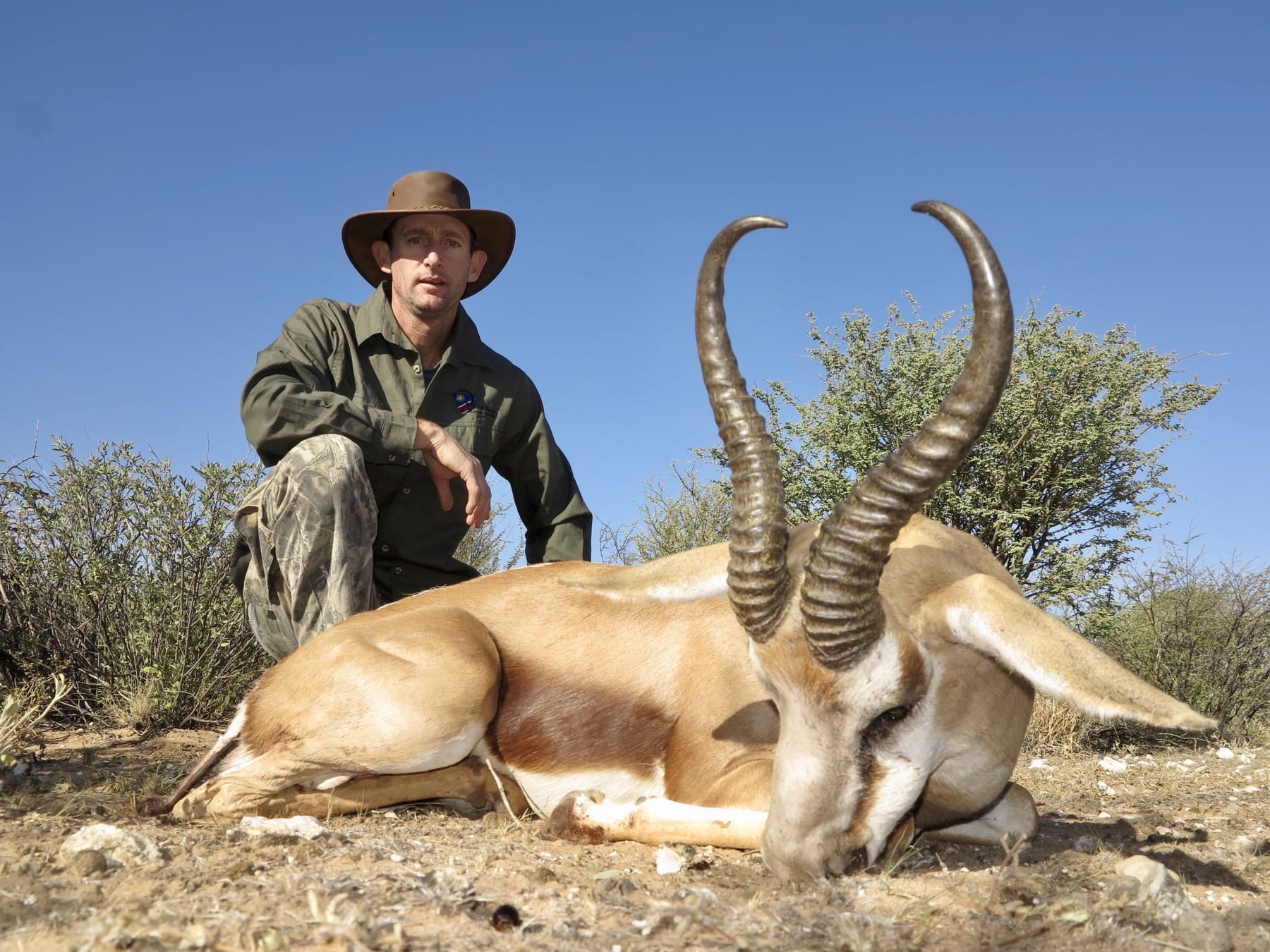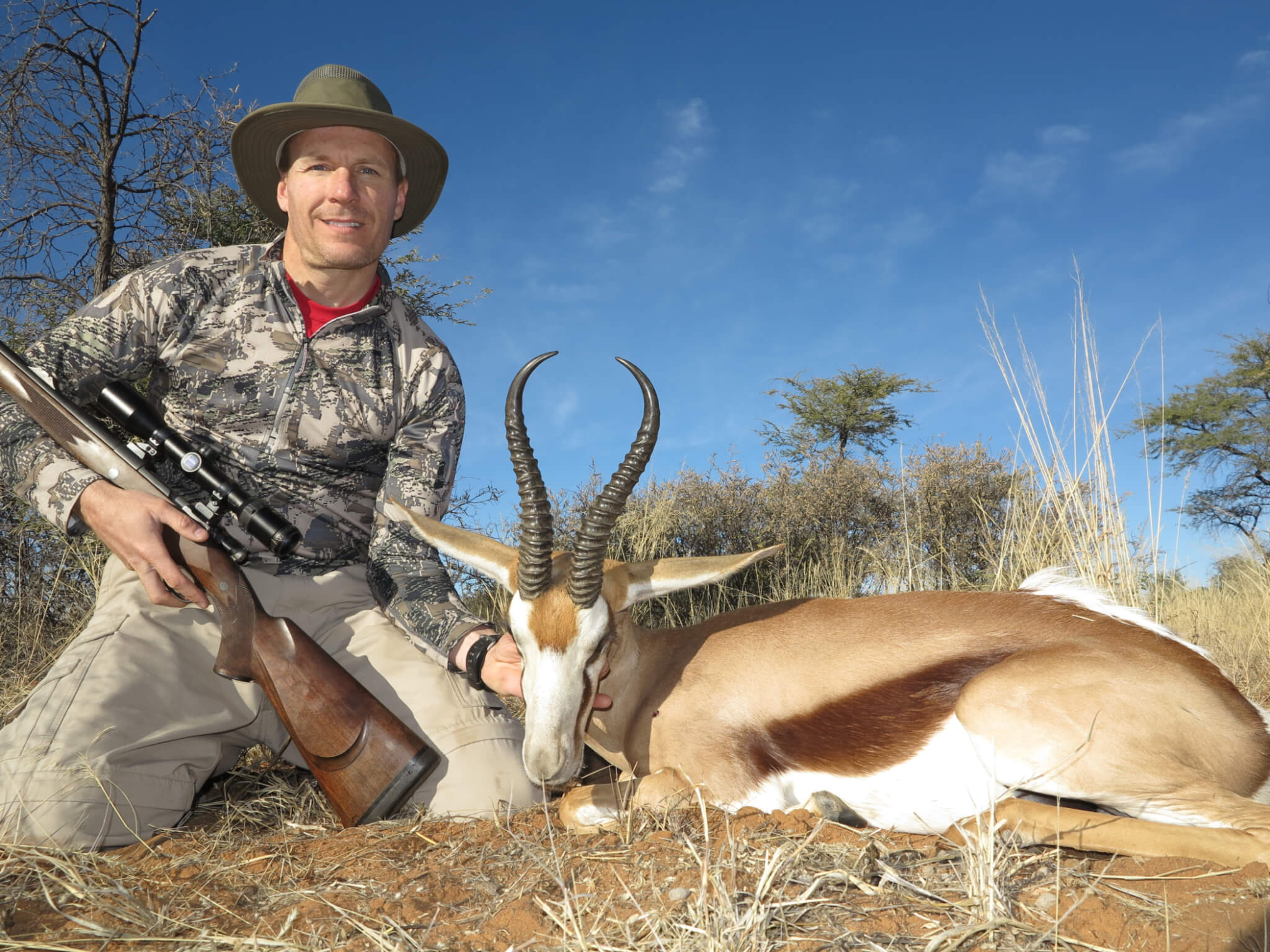Active mainly at dawn and dusk, springbok form harems (mixed-sex herds). In earlier times, springbok of the Kalahari desert and Karoo migrated in large numbers across the countryside, a practice known as trekbokken.
A feature unique to the springbok is pronking, in which the springbok performs multiple leaps into the air, up to 2 m (6.6 ft) above the ground, in a stiff-legged posture, with the back bowed and the white flap lifted. Primarily a browser, the springbok feeds on shrubs and succulents; this antelope can live without drinking water for years, meeting its requirements through eating succulent vegetation. Breeding takes place year-round, and peaks in the rainy season, when forage is most abundant. A single lamb is born after a five- to six-month-long pregnancy; weaning occurs at nearly six months of age, and the lamb leaves its mother a few months later.




